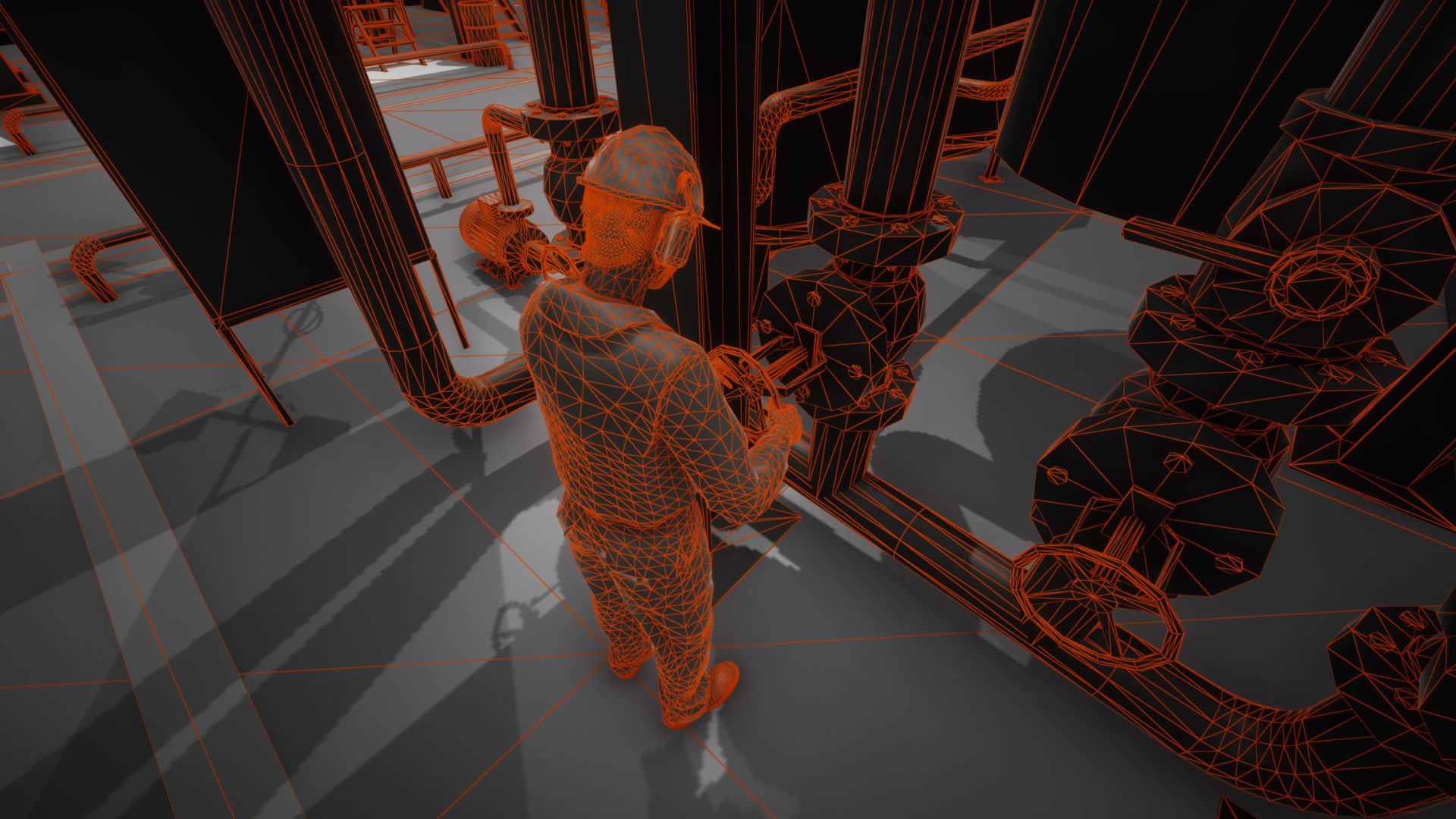
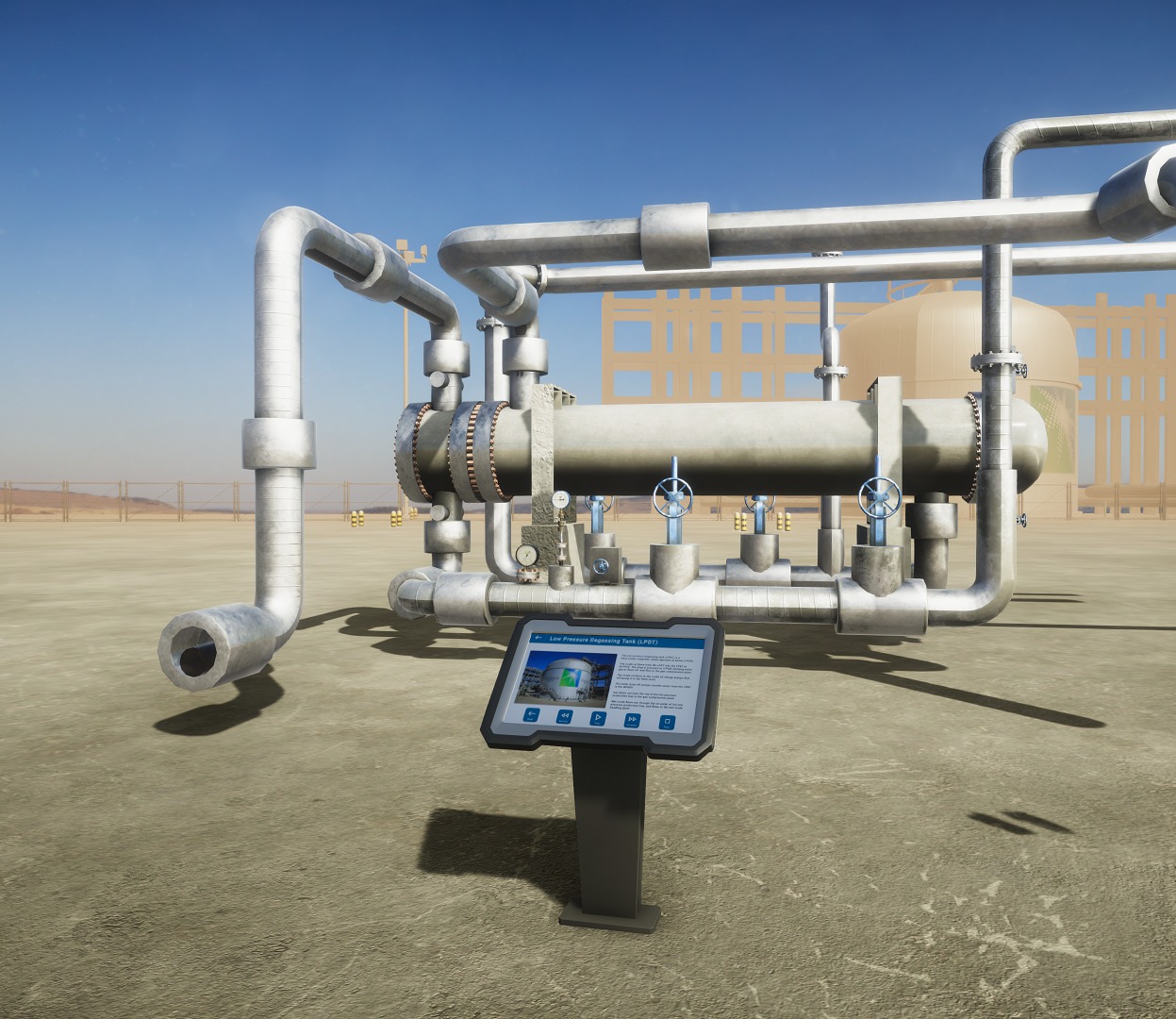
XR technologies are gaining increasing momentum across many industries.
One sector in particular is the Energy sector. Always at the fore front of new advancements they have been quick to adopt Extended Reality (XR) for several applications.
Oil & Gas was one of the first sectors to exploit 3D laser scanning and following on from that digital twins. It is no wonder they are now embracing virtual reality and XR to train operators more effectively, safer and cheaper. The following document outlines some of the considerations when looking to apply XR to the energy and petrochemical sector and more specifically some of the key factors to consider if you’re looking to deploy this technology within your organisation.
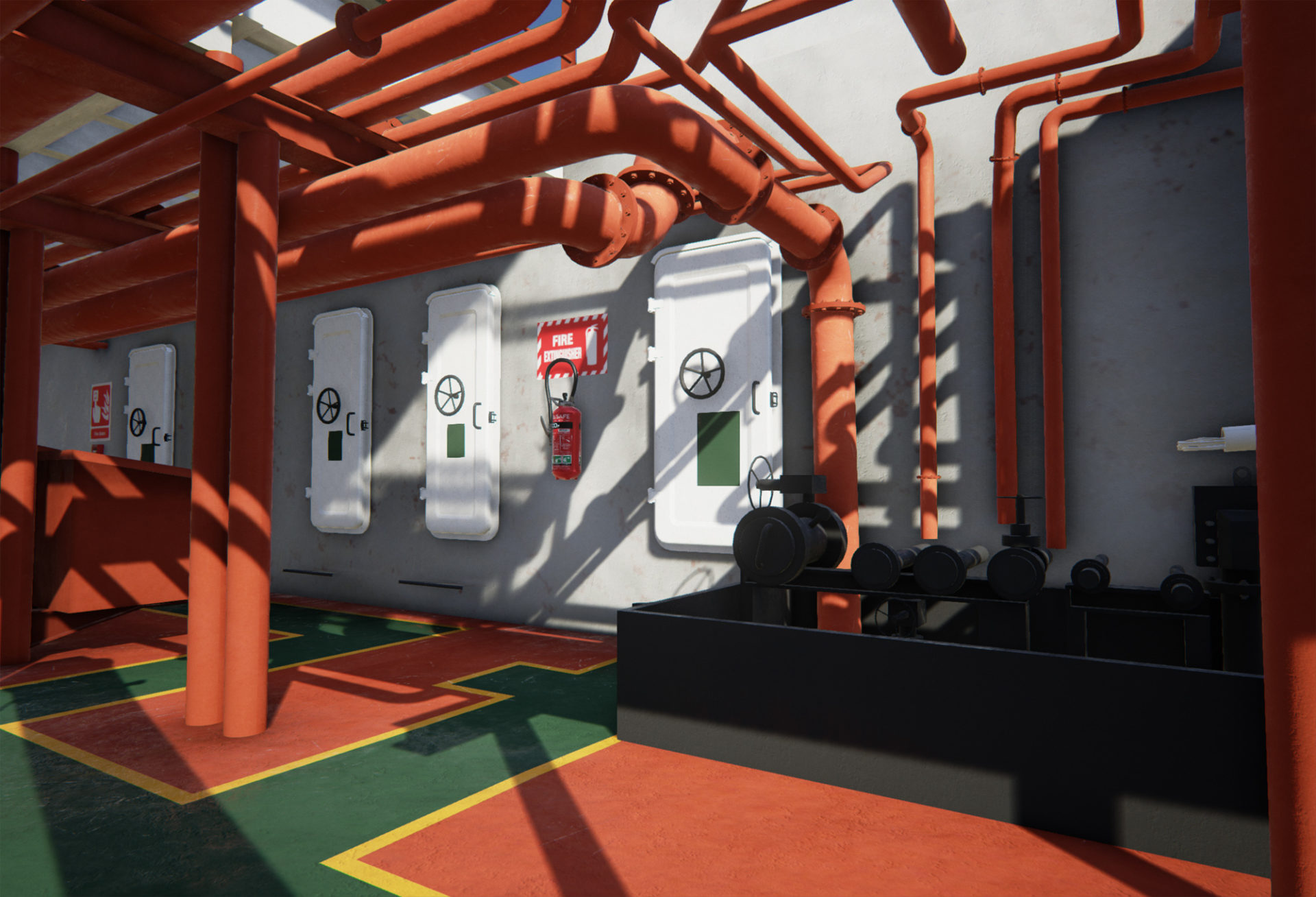
When we talk about Extended Reality (XR) we consider a spectrum of devices.
Virtual reality (VR) is at one end of the spectrum, where the user is completely closed off in a simulated environment and augmented and mixed reality (MR) are at the other end of the spectrum where you can see the real world and interact with real objects.
VR provides the best solution for training while AR and MR are much better suited for maintenance and repair work on real equipment in a live environment.
In this report we will be looking at VR, as this currently provides the most benefits for training in the Energy sector and is the most mature technology.
Current VR training content usually falls in to one of the following categories:
- Process Based Training
- Observational based training
- Interactive Knowledge based training
- Multiuser and group training
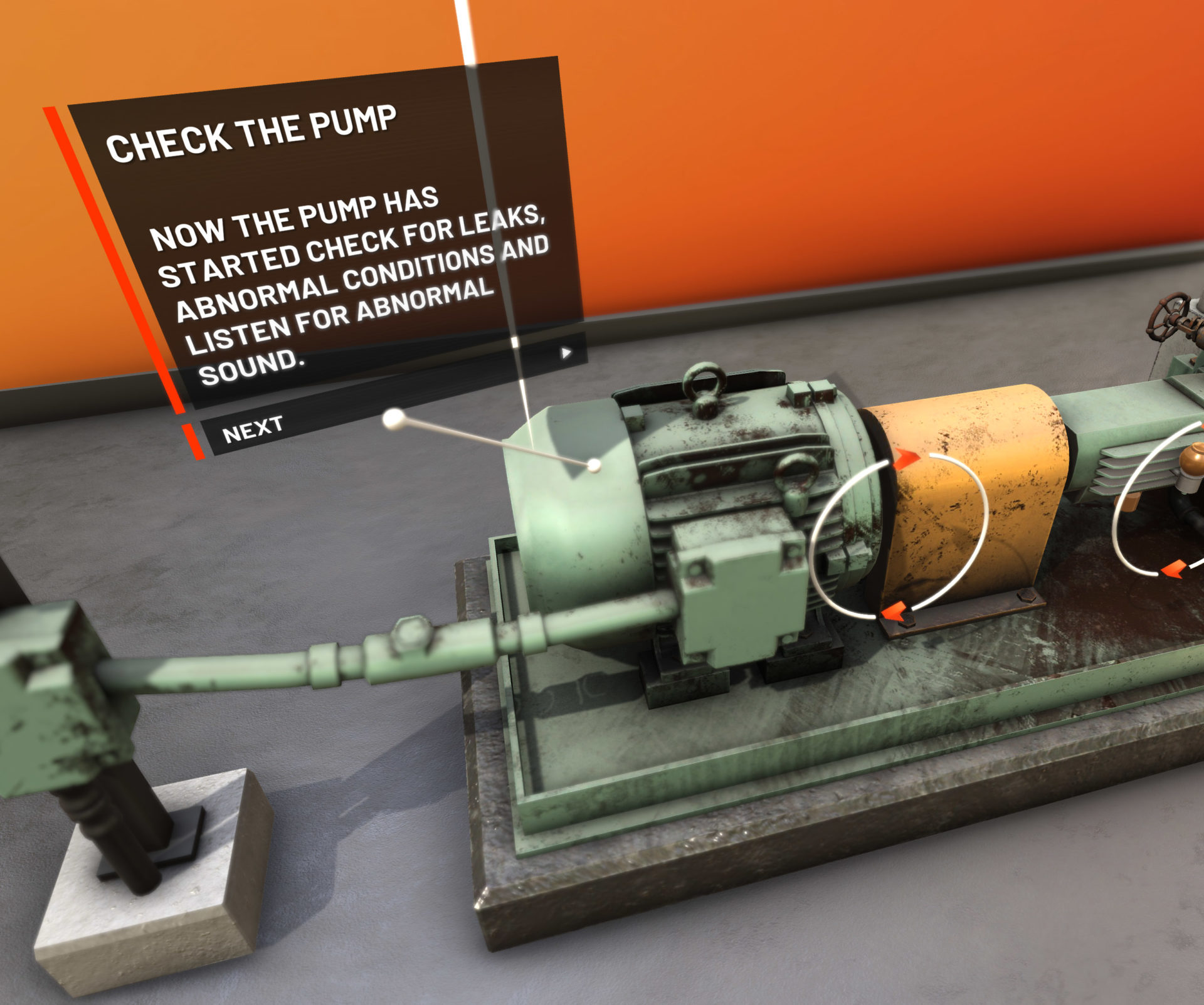
Process Based Training
Processed or object based training requires the user to follow a number of linear steps to carry out a process.
This could be assembling or disassembling a piece of equipment or machinery, following start up or takeout out of service procedures, or following a set of instruction to fix or maintain an item.
Processed based training is ideally suited for VR as it allows the user to build up muscle memory through repetition and memorisation of these tasks, in their own time, in a safe environment.
From an organisational perspective even more value and ROI can be achieved if this is applied to tasks that can’t be carried out easily in the real world due to accessibility to equipment, risk to life or cost.
Training for Plant Shutdowns
Plant shut downs are a rare occurrence and require meticulous planning. These can’t be trained for easily as they only happen once. Using VR the process can be simulated and rehearsed so that when the real operation does happen, it can be run smoothly with less chance of issues which could delay the process. Any delay to the plant shutdown would have a huge cost implication. This means than anytime saved can easily justify the cost to build this type of scenario.
Safety Training
VR is suited to low frequency but high risk operations. These are items that only happens very rarely but if not carried out correctly the results could be catastrophic. By being able to create a virtual simulation users can train regularly and practice on these procedures in a safe repeatable environment.
Replacing on the Job training
Similar to the plant shut down many items of equipment in a refinery environment run 24hrs. This means training to operate them often comes by shadowing an experienced operator. When they do carry out procedures, they are doing them in a live environment. By being able to simulate and practice remotely it will achieve a faster time to competency, less man power and de-risk operations.
Observational based training
Many off the shelf scenarios on the market are comprised of things like hazard recognition as it is the simplest to create. These put the user in the virtual environment and they have to spot and identify hazards or issues.
These types of training simulations allow users to experience a more realistic environments and potentially prepare them for the real thing. A user can navigate around and click to identify hazards. Apart from potentially being more memorable than a 2D training it doesn’t really harness the true value of VR which is all around interactions and learning by doing.
Interactive Knowledge based training
Knowledge based training are scenarios where users are able to explore and interact with virtual simulations of real world objects. They aren’t being taught specific process just general knowledge. An example of this is a virtual refinery environment which Luminous have built. The environment comprises of all the key equipment that is operational in a refinery. Users can view the equipment at 1:1 scale, see the interworking of the machines, watch videos and interact with many different info points. This allows a new student to experience the refinery for the first time and also learn about all the key elements at there own pace.
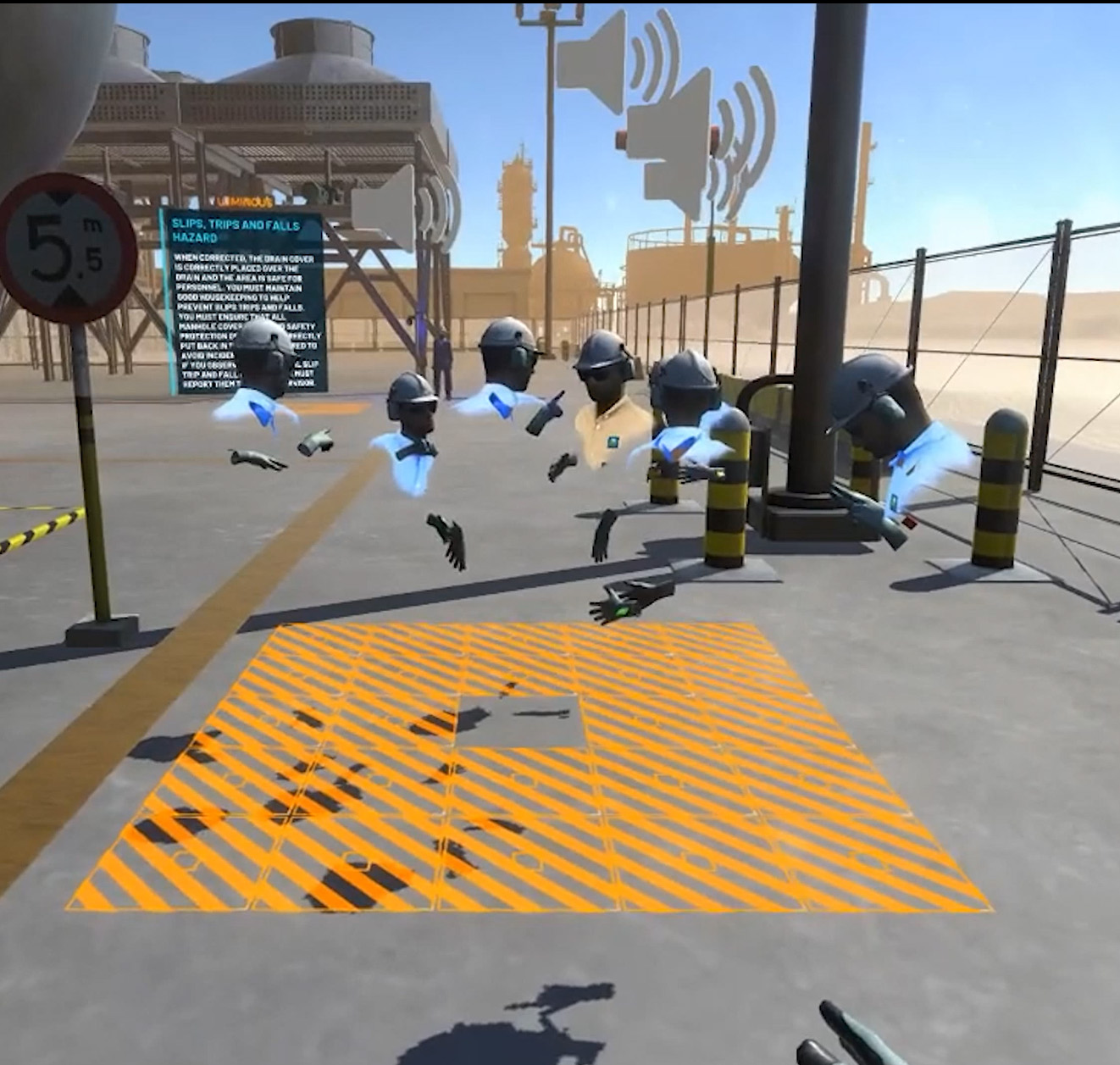
Multi User Scenarios
Multi-user is a feature that has become in more demand especially since the onset of Covid and remote working.
Multiuser environments can be used simply as a method of bringing a virtual class room together for team meetings, design reviews or training. It provides added immersion that you can’t get with a zoom call and a much more natural way of interacting with colleagues. These environments can use virtual white boards and all the tools of a traditional class room. As well as dedicated virtual meetups and classrooms all the other types of training scenarios can have multiuser features added.
Multiuser is built into all Luminous training content. This means trainers can schedule multiuser classes or assessments and then jump in and assist or view a students progress. The Luminous platform has a range of features to allow passing control to different users, highlighting them, muting or even kicking them from the sessions.
Multiuser expands VR from a single solitary user experience to a social experience that can be used to monitor and assess team work and collaboration between students. Luminous have taken this further with a subjective assessment mode allowing instructors to monitor and add comments in real-time as a task is carried out.
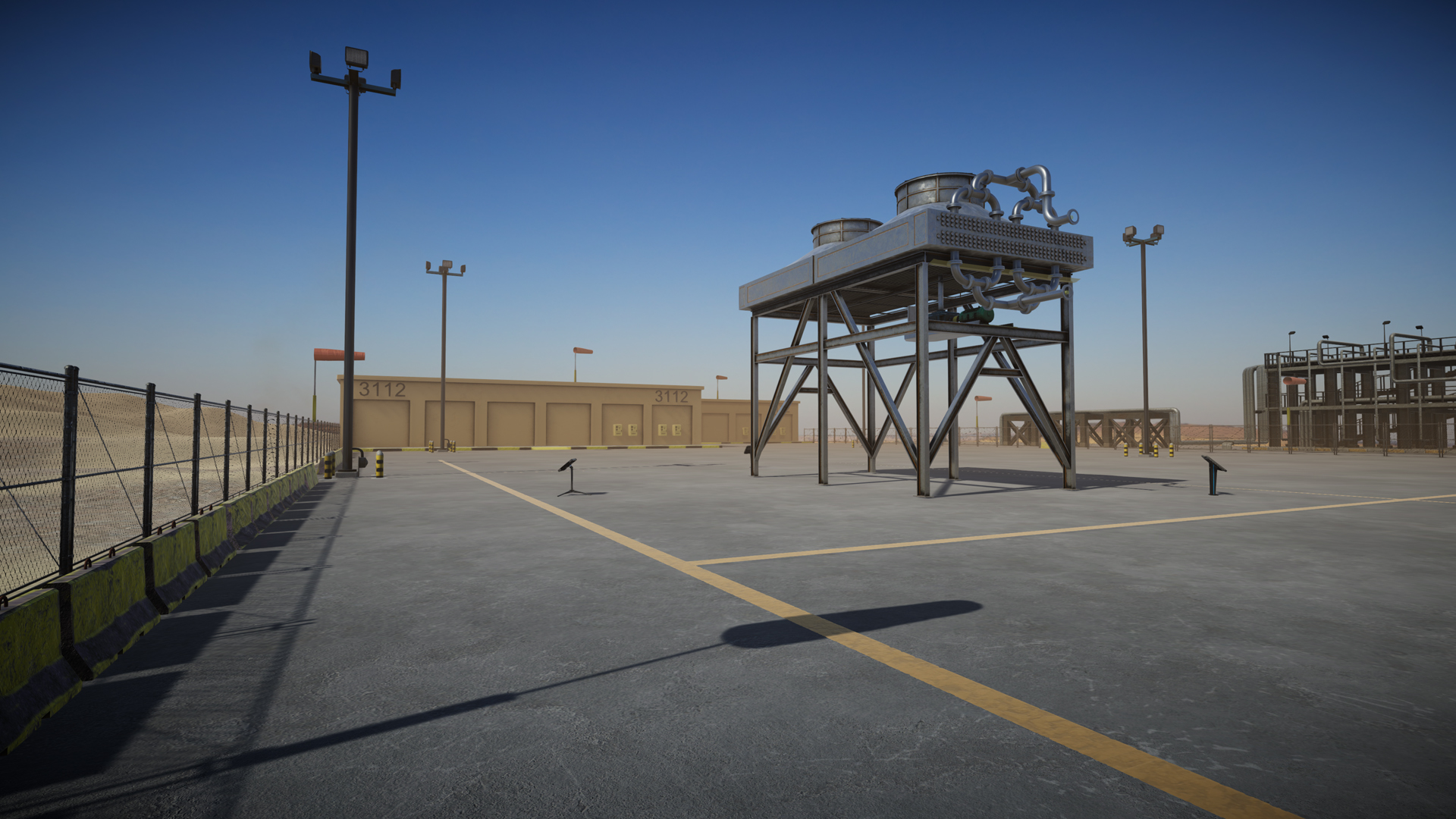
What is VR not good at?
Although VR is a great way of enhancing practical and processes based training there are many scenarios that don’t lend themselves to VR and should be avoided.
For example VR does not work well for training that is passive. Items like filling out a form or work permit is not good in VR as text can be hard to read and it could be done easier and better in real life. Also, it doesn’t work well for training where tasks happen in the 3rd person or multiple locations or different timelines. If you are watching a process play out across multiple locations, then a video would work just as well.
Making the business case for VR
Luminous work with our clients to help them identify the best training user cases that will deliver return on investment. There needs to be a compelling reason why VR is better that the current options. This might be better user engagement or any of the options listed below.
Compelling reason to deploy XR:
- Cheaper that existing solutions – reduce travel and trainer costs
- More effective – faster time to competency / less errors
- More engaging – Better student engagement and enjoyment, more memorable
If you would like to discuss how VR can enhance your training then please get in touch or email info@luminousxr.com to arrange a demo.